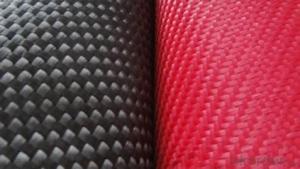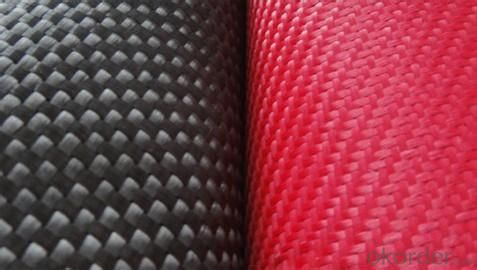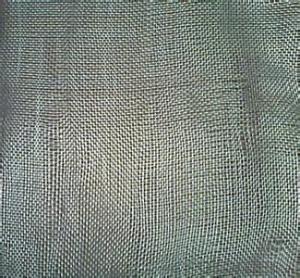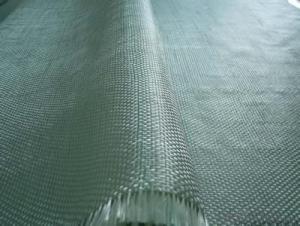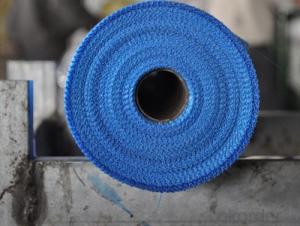High Silica Fiberglass cloth
- Loading Port:
- China Main Port
- Payment Terms:
- TT OR LC
- Min Order Qty:
- -
- Supply Capability:
- -
OKorder Service Pledge
OKorder Financial Service
You Might Also Like
Specifications
High-silica fiberglass is a kind of inorganic fiber that is characterized by its resistance to high temperatures.
1High-silica fiberglass is a kind of inorganic fiber that is characterized by its resistance to high temperatures. Its softening point approaches 1700 and can be used at 900 for a long time. The fabric is applicable for use as a heat-resitant,fire-resitant,and corrosion resistant material in the construction of rockets, missilesand other space vehicles. Apart from applications requiring high temperature-resistance, it is also has insulation and fire prevention uses.
2This product conform with the GJB 1873-94 nation military standard. SPECIFICATION: SiO2>96%, LOI<3%. Our company has plain weave and satin weave, thickness is 0.1-1.5mm.
Application:
High temperature resistant, insulation and sealing material
High temperature ablation resistant material
Fireproof material(fireproof cloth, fireproof curtain, fire blanket)
Dust collecting in media of high temperature gas and filtration in media of high temperature liquid
Filer for molten metal
Distinguisher, insulation material, filtration of automobile and motorcycle
Protective material for welding
Electricity insulation material
- Q: What are fiberglass fabrics made of?
- Fiberglass fabrics consist of fibers made from a glass-like substance known as fiberglass. The process involves molding the fiberglass into strands, which are subsequently intertwined to form a textile. Silica, the primary component of fiberglass, is obtained from sand. To improve the fabric's performance, other elements such as limestone, soda ash, and alumina are incorporated into the mixture. These materials are subjected to a procedure called melting and extrusion, in which they are heated to elevated temperatures and then pushed through small apertures to create the slender fibers. Finally, these fibers are interlaced or looped together to produce the ultimate fiberglass fabric, renowned for its robustness, endurance, and resistance to both heat and chemicals.
- Q: How is fiberglass fabric measured and sold?
- Typically, weight, thickness, and width are the factors used to measure and sell fiberglass fabric. The weight of the fabric is indicated in ounces per square yard (oz/yd²), which signifies the amount of fiberglass material in a given area. A higher weight indicates a denser and stronger fabric. The intended use determines the common weight range, which can vary from 4 oz/yd² to 20 oz/yd². Another important measurement is the fabric's thickness, also known as its thickness. It is usually expressed in mils (1 mil = 0.001 inch) or millimeters (mm). The thickness of fiberglass fabric can vary depending on its application. Thinner fabrics offer more flexibility and are easier to mold, while thicker fabrics provide greater strength and durability. When measuring and selling fiberglass fabric, the width of the fabric roll is also a consideration. It is typically measured in inches or centimeters and refers to the width of the fabric roll. Common widths for fiberglass fabric range from 38 inches (96.5 cm) to 60 inches (152.4 cm). The width is an important factor to determine the quantity of fabric required for a specific project. Fiberglass fabric is commonly sold in rolls or by the yard. The length of the rolls may vary depending on the manufacturer, but common lengths are 50 yards (45.7 meters) or 100 yards (91.4 meters). Additionally, retailers may offer fiberglass fabric by the yard, allowing customers to purchase the desired length for their specific needs. In conclusion, fiberglass fabric is sold based on weight, thickness, width, and length. By considering these factors, customers can select the most suitable fiberglass fabric for their intended applications.
- Q: Are fiberglass fabrics suitable for use in the telecommunications industry?
- Fiberglass fabrics are indeed suitable for utilization in the telecommunications sector. They possess various advantages that render them perfect for this industry. Firstly, their strength and durability are well-known, enabling them to endure severe environmental conditions such as extreme temperatures, moisture, and UV exposure. Consequently, the telecommunications equipment, including antennas and cables, remains safeguarded and functions optimally over a prolonged duration. Moreover, fiberglass fabrics exhibit outstanding electrical insulation properties. This is of utmost importance in the telecommunications field as it prevents interference and signal loss, ensuring the transmission of clear and dependable signals. Furthermore, these fabrics possess a low dielectric constant and loss tangent, which further aids in minimizing signal attenuation. Additionally, fiberglass fabrics are lightweight and flexible, facilitating easy handling and installation. This proves particularly advantageous in the telecommunications industry, allowing for efficient and cost-effective equipment and infrastructure installation. Furthermore, their remarkable resistance to chemicals, corrosion, and fire makes fiberglass fabrics exceedingly reliable and secure for use in telecommunications equipment. This resistance guarantees the equipment's durability and reliability, thereby reducing maintenance and replacement expenses. In conclusion, the combination of high strength, durability, electrical insulation properties, lightweight nature, and resistance to chemicals and fire makes fiberglass fabrics highly appropriate for the telecommunications industry. They offer the necessary protection, reliability, and performance required for efficient and effective telecommunications operations.
- Q: What are the different widths of fiberglass fabric available?
- Fiberglass fabric comes in various widths, catering to different applications and project needs. The typical range of fiberglass fabric widths spans from 1 inch to 60 inches. Nevertheless, it's crucial to acknowledge that suppliers or manufacturers might provide alternative widths depending on their production capabilities and customer requirements. Moreover, custom widths are usually possible upon request. To ascertain the precise widths of fiberglass fabric offered, it is advisable to consult directly with a supplier or manufacturer.
- Q: Is fiberglass fabric suitable for use in automotive interiors?
- Automotive interiors benefit greatly from the use of fiberglass fabric. This material is renowned for its durability, strength, and ability to withstand high temperatures and fires. These exceptional properties make it an excellent option for automotive interiors, where it can endure daily wear and tear and provide exceptional protection. In the automotive industry, fiberglass fabric is extensively utilized for various purposes. It serves as a reinforcement material for seats, headliners, door panels, and other interior components. Its remarkable tensile strength ensures that the fabric can withstand the pressure and stress placed on these parts, ensuring their longevity. Moreover, fiberglass fabric is commonly employed as a sound and heat insulator in automotive interiors. Its thermal characteristics help to reduce heat transfer, keeping the cabin cooler during hot weather. Additionally, it effectively dampens sound vibrations, resulting in a quieter and more comfortable driving experience. Furthermore, fiberglass fabric's resistance to moisture, mold, and mildew makes it an ideal choice for automotive interiors exposed to diverse weather conditions. It is also effortless to clean and maintain, which is vital for preserving the aesthetics and functionality of the interior components. In conclusion, fiberglass fabric offers a multitude of advantages that render it suitable for automotive interiors. Its strength, durability, heat resistance, and insulation properties make it a favored option among manufacturers and designers seeking to create top-notch, long-lasting, and comfortable automotive interiors.
- Q: What are the potential health risks associated with handling fiberglass fabric?
- There are several health risks that may arise from handling fiberglass fabric. One major concern is the potential for skin irritation or allergic reactions. The presence of tiny glass fibers in fiberglass fabric can cause skin irritation, resulting in redness, itching, and rashes. Extended or repeated exposure to these fibers can also lead to dermatitis, which is characterized by skin inflammation. In addition to skin irritation, fiberglass fabric can be harmful if it is inhaled. When the fabric is cut, sanded, or disturbed in any way, it releases small fibers into the air. Inhaling these fibers can irritate the respiratory system, leading to coughing, wheezing, and difficulty breathing. Over time, repeated exposure to fiberglass fibers may result in more severe respiratory conditions like bronchitis or even lung cancer. Moreover, the small size of fiberglass fibers makes them challenging to detect and remove from the body once they have been inhaled or come into contact with the skin. This can lead to long-term health risks as these fibers can become lodged in the lungs or other organs, causing chronic inflammation and scarring. To minimize the potential health risks associated with handling fiberglass fabric, it is crucial to take proper precautions. This involves wearing protective clothing, such as gloves, long sleeves, and pants, to prevent direct contact with the skin. Using a respirator or mask can help reduce the inhalation of fiberglass fibers. It is also important to work in a well-ventilated area or use exhaust fans to decrease the concentration of airborne fibers. Regularly cleaning and maintaining workspaces to eliminate any accumulated fibers is also advisable. In conclusion, while fiberglass fabric has various applications and advantages, it is essential to be mindful of the potential health risks associated with its handling. By taking appropriate precautions, individuals can minimize the likelihood of experiencing adverse health effects.
- Q: Are fiberglass fabrics suitable for use in the transportation industry?
- Yes, fiberglass fabrics are suitable for use in the transportation industry. They offer excellent strength-to-weight ratio, durability, and resistance to various environmental conditions. They are commonly used in the manufacturing of automobile components, aircraft parts, and marine vessels due to their high mechanical properties and ability to withstand harsh environments.
- Q: How is fiberglass fabric used in the production of heat shields?
- Fiberglass fabric is commonly used in the production of heat shields due to its excellent thermal insulation properties. It is capable of withstanding high temperatures and helps protect surrounding components or surfaces from heat damage. The fabric is often layered or combined with other materials to create a heat-resistant barrier, which can be used in various applications such as automotive, aerospace, and industrial settings.
- Q: How are fiberglass fabrics manufactured?
- Fiberglass fabrics are manufactured by weaving or knitting strands of glass fibers together to create a flexible and strong textile material. The process involves melting glass into fine filaments, which are then formed into yarns. These yarns are then woven or knitted into various patterns, depending on the desired strength and texture of the fabric. The resulting fiberglass fabrics can be used in a wide range of applications, including insulation, reinforcement, and composite materials.
- Q: How is fiberglass fabric used in the production of wind turbine blades?
- Fiberglass fabric is extensively used in the production of wind turbine blades due to its exceptional properties and advantages. The fabric is typically made from woven fiberglass filaments, which are lightweight, strong, and highly durable. One of the most significant uses of fiberglass fabric in wind turbine blades is as the main structural material. The fabric is typically layered and impregnated with a resin, such as epoxy, to form a composite material known as fiberglass-reinforced polymer (FRP). This FRP composite provides the required strength and stiffness to withstand the forces and stresses experienced by the blades while operating in the wind. The process of incorporating fiberglass fabric into wind turbine blades involves several steps. First, a mold is created in the shape of the blade using a positive model. Layers of fiberglass fabric are then carefully placed onto the mold, with each layer oriented in a specific direction to optimize the blade's mechanical properties. The fabric layers are impregnated with resin, ensuring that the entire structure is bonded together. This process is often repeated multiple times to increase the thickness and strength of the blade. The advantages of using fiberglass fabric in wind turbine blades are numerous. Firstly, the fabric's lightweight nature allows for the construction of longer and larger blades, enabling more efficient energy capture from the wind. Additionally, fiberglass fabric is highly resistant to corrosion, making it an ideal choice for outdoor applications, where the blades are constantly exposed to harsh environmental conditions. Furthermore, the inherent flexibility of fiberglass fabric allows the blades to bend and twist with the changing wind conditions, effectively reducing unnecessary stress and enhancing overall performance. The fabric is also resistant to fatigue, meaning that it can withstand repeated loading cycles without compromising its structural integrity. Overall, fiberglass fabric plays a crucial role in the production of wind turbine blades by providing the necessary strength, durability, and flexibility required for efficient and reliable energy generation. Its lightweight nature, corrosion resistance, and fatigue resistance make it an ideal material choice for constructing blades that can withstand the demanding operating conditions of wind turbines.
Send your message to us
High Silica Fiberglass cloth
- Loading Port:
- China Main Port
- Payment Terms:
- TT OR LC
- Min Order Qty:
- -
- Supply Capability:
- -
OKorder Service Pledge
OKorder Financial Service
Similar products
Hot products
Hot Searches
Related keywords
